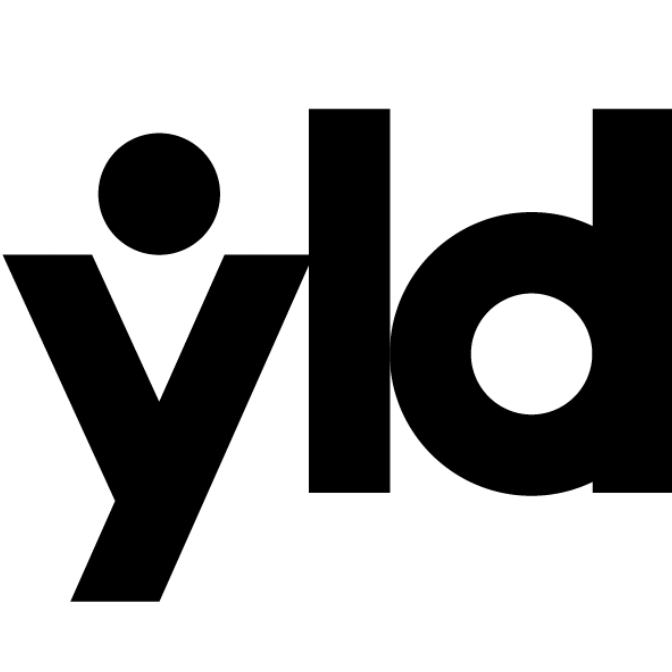

Industry
Design Systems
Project
Multi-Brand Design System
Job Title
Design System Lead
Company:

YLD is a leading software consultancy and development company based in London, specialising in helping organisations transform their digital capabilities. Founded in 2013, YLD works with clients across various industries including financial services, healthcare, and e-commerce. The company is known for its expertise in modern software development practices, user experience design, and creating scalable digital solutions that drive business growth and innovation.
What I did:
In collaboration with another product designer, I developed a new multi-brand design system for a financial client, creating foundations, components, and comprehensive documentation to ensure consistency and scalability across various brands within the client's portfolio whilst preserving each brand's unique identity.
The Challenge
This project was divided into three key stages: Discovery, Foundations, and Components. The challenge was to create a design system that could support multiple brands within a financial client's portfolio whilst maintaining each brand's unique identity and ensuring consistency across all touchpoints.
The system needed to be comprehensive enough to handle various use cases whilst remaining flexible enough to accommodate future brand additions and evolving requirements. Each brand required its own visual identity whilst sharing common interaction patterns and accessibility standards.
The financial industry's strict compliance requirements and the need for consistent user experiences across different products added complexity to the design system architecture.
Business Goals
- •Create scalable multi-brand design system
- •Reduce design and development time across brands
- •Ensure brand consistency whilst preserving unique identities
- •Meet financial industry compliance requirements
User Goals
- •Experience consistent interactions across all brands
- •Access accessible and inclusive financial services
- •Navigate familiar patterns across different products
- •Trust in professional and polished interfaces
Discovery
Extensive User Research
We spent a significant amount of time conducting individual interviews with over 30 people working across different teams. This included designers, developers, product managers, account managers, and team leaders. It was important to understand their current ways of working and identify pain points in their existing processes.
Discovery also involved taking a look at existing brand guidelines to ensure this information was not only up to date but it was considered when making the design systems using Figma design tokens. This comprehensive review helped us understand the current state of brand consistency and identify opportunities for improvement.
It was interesting to discover that even people within the same team were using different design assets, components, and tools, which led to various inconsistencies in the design across web pages, forms, and other digital products.
Findings
Through our research, we discovered what was already working well and what wasn't. This was crucial for us to create a unified and consistent global design system that could support around 26 different brands whilst maintaining their unique identities.
Key Insight
Even people within the same team were using different design assets, components, and tools, which led to various inconsistencies across web pages, forms, and other digital products. This fragmentation was the core challenge that our unified design system needed to solve.

Design Process
Research & Analysis
In depth UI audit and analysis of existing interfaces, user experience and visual design assessment, requirements gathering and prioritisation, and competitive analysis of other financial design systems.
Foundations Development
Authored the foundational elements and guidelines for the design system on Supernova. This included creating detailed documentation and compiling a comprehensive set of assets including colour systems, typography scales, spacing grids, and icon libraries. These foundations served as the blueprint for consistency and scalability across various brands within the client's portfolio.
Component Building & Training
Built core components for the design system, meticulously incorporating brand theming kits to ensure each brand's unique identity was preserved whilst maintaining overall cohesion. Created comprehensive asset library with brand theming kits, and blueprint for consistency and scalability across the organisation.
Conducted interactive workshops covering design system principles and component usage. Hands on training sessions with real project examples using Figjam and Figma collaboration tools for team alignment. Created video tutorials and written guides for ongoing reference.
Throughout the project, we held weekly presentations to explain findings, answer questions, and discuss next steps. The presentations involved a mixture of people in the office and remote workers, ensuring everyone stayed informed and engaged throughout the process.
All user testing sessions were recorded and compiled into comprehensive reports to share with stakeholders, providing clear documentation of our findings and recommendations.





Organisational Impact
Our research and work have also led to the company creating their own design council. This council ensures ongoing improvement and adaptation, keeping the design system up-to-date with emerging trends and technologies.
The establishment of this council represents a significant organisational commitment to design excellence and systematic thinking. It provides a structured approach to design system governance, decision-making, and continuous evolution.
The design council includes representatives from different brands and departments, ensuring that the system continues to meet diverse needs whilst maintaining consistency and quality standards across all touchpoints.

Results
Brand Coverage
Multi-brand support ensuring each brand's unique identity is preserved whilst maintaining overall system cohesion and consistency.
Components Built
Comprehensive component library with reusable design patterns and brand theming kits integration for cross-project consistency.
Design Council Established
Organisational commitment to design excellence with ongoing improvement and adaptation to emerging trends and technologies.
Training Success
Comprehensive training program with interactive workshops and hands-on sessions ensuring effective adoption across all teams.
